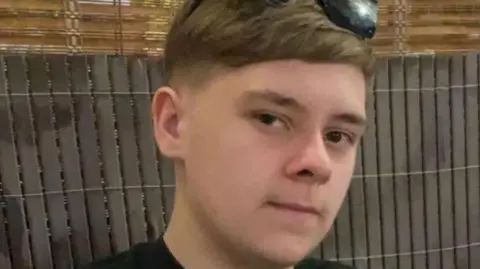In a tragic episode reflective of the deeper issues facing youth today, a 15-year-old boy has been found guilty of murdering a fellow pupil, Harvey Willgoose, during a school lunch break in Sheffield. This incident took place on Monday, February 3, at All Saints Catholic High School, a setting that is usually a haven of learning and growth but, on that fateful day, turned into a scene of violence. The case has attracted substantial attention, highlighting the perils that teenagers face from both social pressures and peer conflicts exacerbated by the modern age of social media.
Harvey Willgoose, also aged 15, tragically lost his life after being stabbed in the heart during a confrontation that occurred hours after an earlier heated exchange between him and the defendant. The trial unfolded at Sheffield Crown Court and lasted nearly a month, during which the jury learned that the two boys had quarreled in class earlier that day. This confrontation, fueled by preceding events over social media, ultimately led to the fatal attack which would shake their small community to its core.
The defendant in this case, whose identity is protected due to his age, had initially admitted to manslaughter and possession of a knife but staunchly denied the murder charge. After deliberation, the jury reached a majority verdict of 11 to 1, finding him guilty of murder. This verdict was met with emotional reactions from the victim’s family, who expressed their relief and grief at the public gallery, shouting in approval while tears flowed following the harsh reality of their loss.
Judge Mrs. Justice Ellenbogen presided over the case, informing the defendant that he would be sentenced in October, an event that will mark a significant moment in a case that has provoked strong sentiments within the community. The prosecution painted a picture of a troubling prelude to the murder, detailing how the boys had chosen opposite sides in a conflict involving other students, culminating in a brief lockdown of the school just a few days prior to the stabbing.
The court proceedings included heart-wrenching accounts from witnesses who described the pandemonium in the school’s courtyard during the stabbing. One student likened the atmosphere to “chaos,” as pupils fled in various directions to escape the horror unfolding before them. Others recounted taking cover, illustrating the sheer panic that gripped the school community in those moments.
During the trial, the defendant claimed he never intended to kill Harvey, suggesting instead that he had “snapped” and lost control amid a culmination of prior bullying incidents. He described himself as someone who could “get angry quickly,” citing experiences of racial abuse and bullying both online and in-person. However, the prosecution refuted this narrative, arguing instead that the defendant’s actions were calculated and that he possessed an unhealthy fascination with weapons, having researched and posed with them online—a troubling indicator of his mindset prior to the tragic event.
The emotional and psychological impacts of the incident extend far beyond the immediate families of the boys involved. This case serves as a chilling reminder of the challenges young people face today, navigating a world intertwined with social media and personal conflicts. The death of Harvey Willgoose, a young boy with a promising future, resonates deeply, raising questions about community safety, the accessibility of weapons, and the urgent need for effective conflict resolution interventions in schools. As the community begins to heal, discussions surrounding mental health support for youth and preventive measures against school violence will undoubtedly be at the forefront of their collective consciousness.











